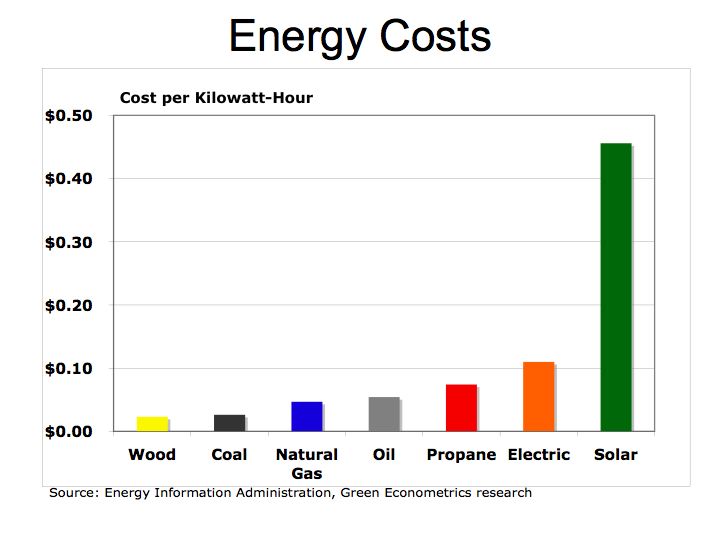Solar Energy Parity
How long will it take before solar energy is at parity with hydrocarbon fuels? In terms of cost per Kilowatt-Hour (KWH), solar energy is four-to-ten times the cost of hydrocarbon fuels. Green Econometrics’ research estimates that solar energy cost about $0.38-to-$0.53 per KWH. (See Understanding the Cost of Solar Energy ) There are two significant market factors that should help reduce the cost of solar energy: strong market demand for solar energy driven by rapidly rising oil prices that should lead to new product developments and the economies of scale derived from experience curves in the production of solar panels.
With oil harder to find and more costly to extract, energy prices should continue to rise. In the U.S. oil production continues to decline despite increased drilling activity. (See How vulnerable are we to energy shocks? ) These market factors should continue to drive demand for solar energy. With strong market growth rates we wanted to assess various solar energy cost assumptions for different experience curves found in the semiconductor industry.
The productions of solar photovoltaic cells are similar to semiconductors and enjoy cost reduction as production increases. We briefly mentioned experience curves, the production cost reductions associated with doubling production of semiconductors in our last post from an article from the Lockwood group TECHNOLOGY TRANSFER: A PERSPECTIVE. These experience curves translate into cost reductions of 10%-to-30% as production volume doubles.
Our analysis attempts to develop a what-if scenario for the solar energy market by comparing energy costs for different experience curves and market growth rates. Research into new materials or processes could significantly reduce the cost of solar energy. Of course the funding of solar R&D is limited, but there are programs that appear promising such as The Lewis Group at Caltech
Figure 1 Cost per Kilowatt-Hour

Figure 1 illustrates the cost disparity between solar energy and hydrocarbon fuels. Our what-if scenario provides a framework to measure the number of years it will take before solar energy cost are at parity to oil and electric. Our assumptions are solar energy market growth rates of 40%-to-60% and experience curve of 10%-to-30%. Current growth rates for domestic solar suppliers such as SunPower (SPWR), First Solar (FSLR) and Evergreen Solar (ESLR) are current enjoying revenue growth rates of over 100%.
Figure 2 Solar Parity

Oil and electric prices are assumed to increase at a modest 2.6% per annum for electric and 3.3% for oil. In the most optimistic scenario of market growth of 60% and experience curve of 30%, suggest that it would take until 2014 or seven years before solar energy is equal to the price of electric. With 10% experience curve and 40% market growth it could take 20 years before parity. Increased funding into solar energy research and higher energy prices shorten the time.
The bottom line is that as solar energy reaches parity with hydrocarbon fuels, energy security is achieved for all countries.
Related Posts